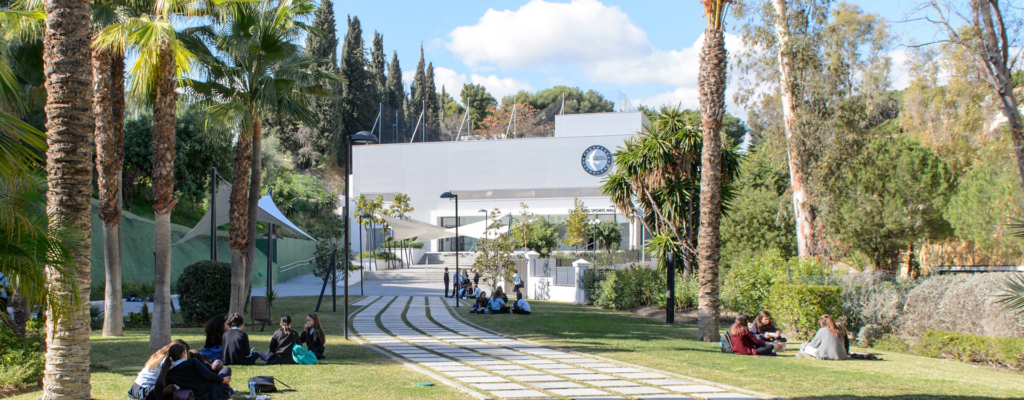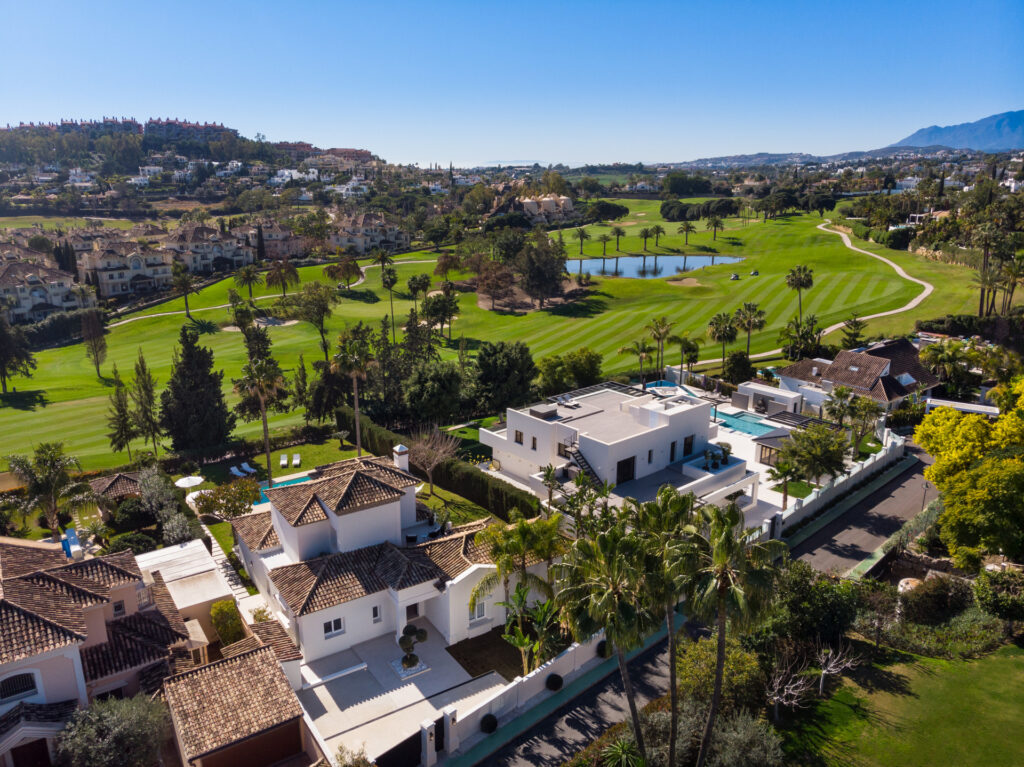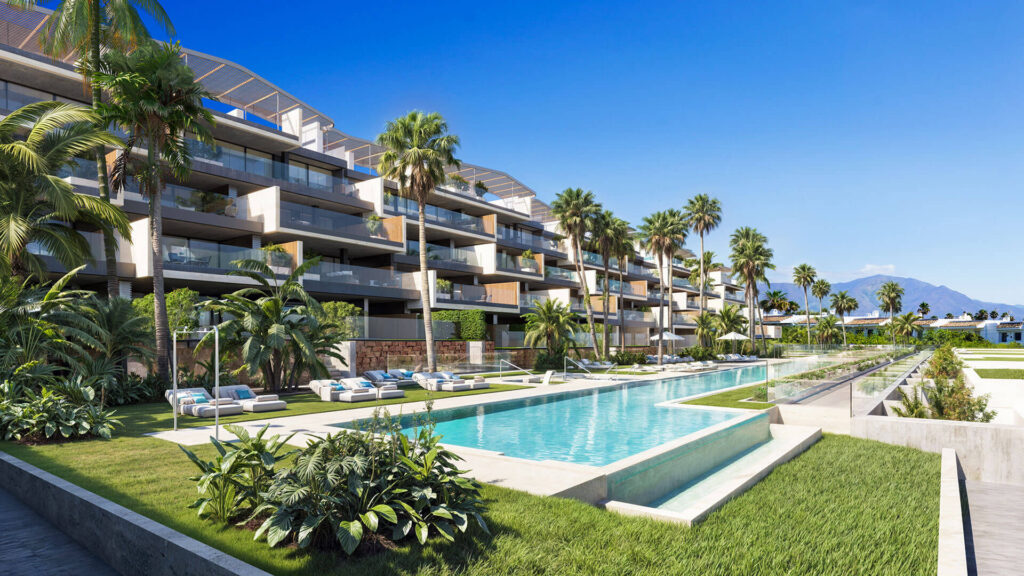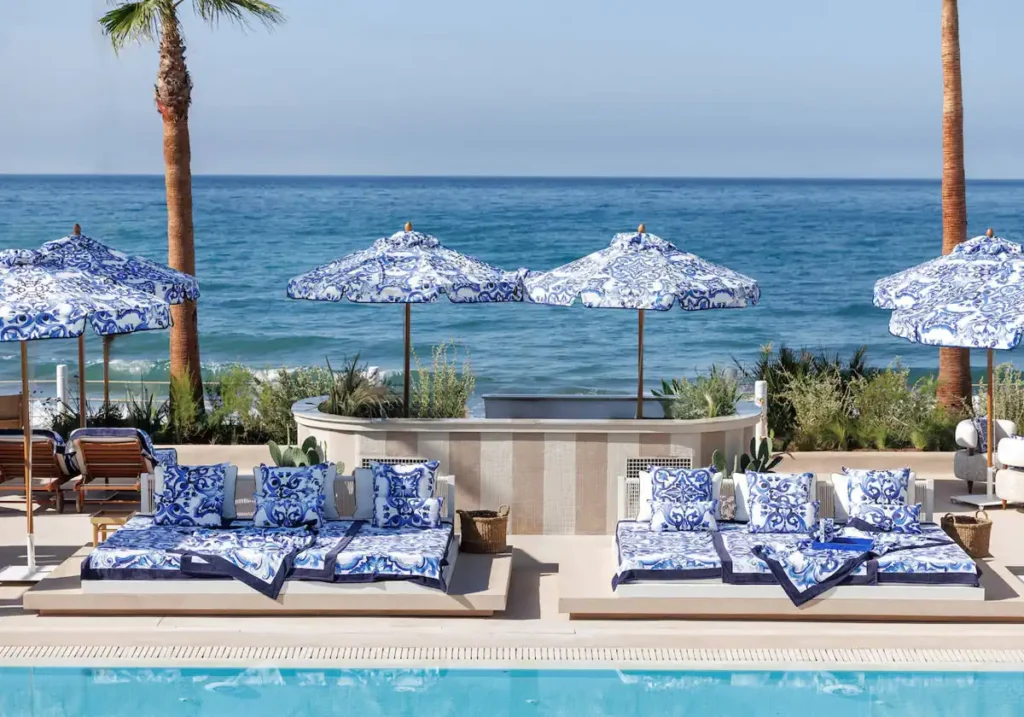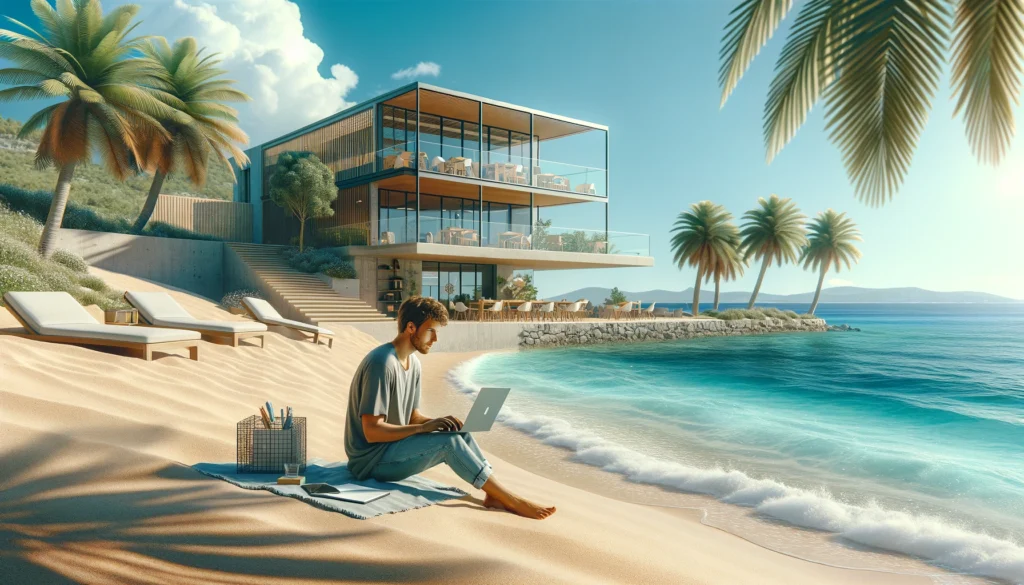The Costa del Sol (sunny Mediterranean coast of Málaga province) remains a hot real estate market in 2025. Home prices have hit new highs and demand is strong. Buyers are drawn by the warm climate, beaches, golf and lifestyle. Despite high prices, both local and foreign buyers are active. Market activity is up overall, though the pace of new construction is slowing.
Prices in the region have been climbing steadily. For example, by mid-2025 the average resale home price in Málaga province was about €3,842 per square meter, up around 13–14% in a year[1]. Luxury towns lead the way: Marbella averages over €5,200/m², and Benahavís over €5,200/m² as of 2025[2]. Towns like Estepona (on the west side of the coast) are more affordable but rising fast – around €3,900/m² now. Málaga city itself is cheaper than the luxury resorts, roughly €3,600/m², but it too has seen double-digit gains[3][4]. In short, all these markets are up year‑on‑year, with Marbella and Benahavís highest on the table and more moderate prices inland.
Chart: Average prices by location. A bar chart (2024 vs 2025) would show Marbella and Benahavís near €5,000–€5,200/m², Estepona around €3,500–€3,900/m², and Málaga city around €2,700–€3,600/m², illustrating the strong price increases over one year.
Foreign Buyer Trends
A big factor in demand is foreign buyers. About one quarter to one third of home sales in Málaga province are by non-residents[5][6]. In fact, in early 2025 roughly 27% of purchases in Málaga were by foreigners[5]. By nationality, British buyers are still the largest group on the Costa del Sol. In 2025, Britons accounted for about 14–15% of all purchases in Málaga province, slightly ahead of Dutch (about 13%) and German buyers (about 10%)[7]. This means among foreign buyers in Málaga, roughly 35–40% were British, with Dutch and Germans each making up a few dozen percent, and other nationalities (Nordics, French, Belgians, etc.) filling the rest.
The mix of buyers reflects the area’s appeal: sunny weather, good air links, and a developed expat community. Many British and Northern European retirees and vacationers choose Costa del Sol homes. One local report notes that Marbella, Estepona, Nerja and other Costa del Sol towns are especially popular among Northern Europeans looking for second homes or retirement properties[8]. Rising overseas demand has pushed prices up, especially in seaside locations. (At the same time, some locals worry about affordability and housing for residents.)
Chart: Foreign buyer breakdown. A pie chart could show roughly 40% British, 30% Dutch, 20% German, and the remaining 10% from other nationalities, reflecting the main foreign buyers on the Costa del Sol in 2025.
Construction Activity & New Developments
Homebuilding on the coast has been busy but shows signs of slowing. In Q3 2025, roughly 1,800 new homes were approved in Málaga province[9], down about 16% from the year before. Almost all these approvals were for multi-family developments (apartments and condos) along the coast, led by Málaga city, Mijas, Manilva, Estepona and Fuengirola[10]. For example, in that quarter Málaga city alone approved 503 new units and Estepona 194. By contrast, inland areas saw very few new projects, reflecting the focus on coastal locations.
Also note that hardly any subsidized housing (social housing) approvals occurred that quarter; nearly all new projects are market‑rate. Completions slowed as well: about 1,500 homes were finished in Q3, a 26% drop from a year earlier[11]. Industry experts say this slowdown highlights the need for better planning. Local architects argue for simpler rules and more affordable housing projects to keep up with demand[12].
Despite the slowdown, new high-end developments continue. Luxury beachfront and golf-course projects are under construction, and some have recently launched. For instance, Málaga city greenlit the first phase of Térmica Beach, an exclusive seafront development of high-end apartments[13]. In Marbella and Estepona, new luxury complexes (often branded or designer projects) are being built to meet foreign demand. In summary: supply is increasing slowly, with most growth in coastal towns.
Affordability and Housing Pressure
Rising prices have made buying harder for local residents. A recent industry study found about 77% of Spanish buyers feel priced out of their preferred area because homes cost too much and there aren’t enough for sale[14]. Many families are delaying purchases: the survey says over 39% postpone buying due to high prices[14]. These trends likely apply to Málaga province as well. Wages and savings for locals have not kept pace with the boom in housing prices, especially in places like Marbella. In plain terms, a typical salary in Andalucía might buy only a small fraction of a home in Marbella at today’s prices.
This affordability squeeze is driving some buyers toward less expensive areas (for example, buyers who can’t afford central Marbella look to Estepona or smaller towns). It also fuels calls for policy action to boost affordable housing. Local authorities and experts warn that tourism rentals and luxury demand can “price out” young families.
New Tourism Rental Policy
The national government has recently moved to monitor tourism rentals more closely. In October 2025, Prime Minister Sánchez announced a new Tourist Housing Observatory to map how holiday rentals affect housing in popular cities[15]. This is part of Spain’s “Tourism Strategy 2030”. The goal is to balance visitor numbers with local residents’ needs[15][16]. The observatory will track areas with high short‑term rental activity (like holiday lets or Airbnbs) so that policy makers can respond if locals struggle to find housing.
This change reflects growing concern over overtourism. The government sees that with 94 million visitors in 2024, some regions (including parts of the Costa del Sol) have too many tourists for the local population[16]. Planners want to ensure tourism revenue doesn’t end up hurting housing availability. For buyers and investors, this means future rules may affect short‑term rentals (getting licenses, etc.), which could influence rental yields. But for now it mainly signals that Spain will manage tourism more carefully.
Safety and Lifestyle
A big draw of the Costa del Sol is quality of life. The area is sunny year-round, with over 300 days of sun, outdoor cafes, beaches and golf. People often mention the mild climate, friendly communities, good healthcare (hospitals), and the convenience of Málaga’s airport for travel. International residents say the relaxed, outdoors lifestyle is a key benefit[17][18].
Crime rates in Costa del Sol towns are generally low for violent crime, though like any city there are occasional petty incidents. Most expats feel safe, especially in well‑to‑do neighborhoods. The region’s police and security presence in tourist areas is strong. Overall, safety is comparable to other Western European coastal resorts. Families and retirees appreciate the walks along the coast and mountains, the cultural events in Málaga city, and the proximity to nature.
Conclusion for Buyers & Investors
In summary, the Costa del Sol market is very active in late 2025. Prices are high and still rising modestly. Marbella and Benahavís are the priciest markets (luxury segment), while Estepona and inland areas offer somewhat better value. Málaga city is mid‑range but fast‑growing. For investors, the continued price growth and strong rental demand suggest potential gains; experts note that licensed, quality rentals can still yield around 6–8% annually if managed well[19]. However, one must budget carefully: transactions costs and taxes in Spain are significant, and financing costs (mortgages) are higher than in the past (currently around 3–4%).
For homebuyers, especially locals, the outlook is mixed. Home values are likely to keep inching up in the near term, given limited supply and steady demand. Foreign interest and tourism help keep the market robust. However, buyers should beware of overpaying: price jumps may slow if interest rates stay up, and new government measures on rentals could affect expectations. If buying, it’s wise to shop around and consider emerging areas (such as the western Costa del Sol like Casares or inland towns) where prices started from lower levels.
In all, the Costa del Sol remains a highly desirable market for international buyers, retirees, and wealthy investors who can afford it. Its appeal of sun and lifestyle is stronger than ever. But with high prices and policy changes on the horizon, new buyers and locals alike will need to plan carefully.
Sources: Data and analysis from real estate reports, news and government releases. Notable sources include Idealista market reports[1][4], Spanish Notary and industry studies[5][7], and local news on construction and policy[9][15][14].


